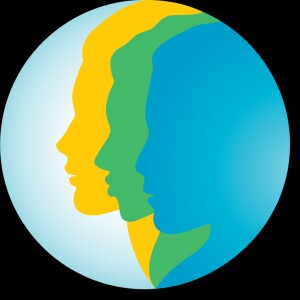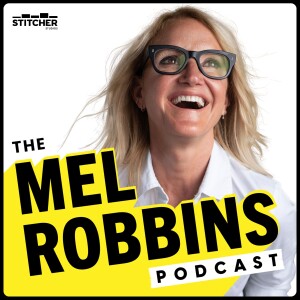
Women in Data Science Worldwide
Education
When Andrea was studying math as an undergrad, she was required to take an arts class in order to graduate, and soon discovered that she loved poetry. She learned that the process of writing a poem was often similar to solving a complex math problem—just starting with one part, and then doing one more, and gradually the rest is revealed. She enjoyed it so much that her first machine learning project in graduate school was on poetry/sonnet generation.
Andrea wanted to blend technology and art in her career and Getty Images turned out to be the perfect place to combine her two interests. Getty Images curates and manages a huge library of images and videos that are used in editorial news, websites, social media, billboards and more. She started as a data scientist two years ago, and is now leading the AI/machine learning team to develop new tools to help clients more effectively use Getty’s creative assets. She explains that many of their creative clients come to the site and don't have the language to describe the types of images they're looking for. Andrea’s team is building models to help clients find images when they don't have the words to articulate their vision. Another machine learning project they are working on is how to identify awkwardly posed “stocky” photos vs. the more realistic photos that clients are looking for.
She is currently doing more painting than poetry, and also sees parallels between painting and computer vision. She explains that when you start with a blank canvas, you have to think about shapes, lines, negative space and colors. It’s a similar process to how a machine comprehends pixels and the relationships between colors, contrast, shapes and textures.
Andrea created a special photo exhibit for the WiDS Stanford 2020 Conference that illuminates concerns about image manipulation while also posing provocative questions about gender and leadership. In the exhibit, she used machine learning (style GAN) to transform pictures of US presidents, ranging from George Washington to Donald Trump, into female versions of those presidents. The style GAN is a machine-learning model that can manipulate an image in different dimensions, in this case, from masculine to feminine.
The project was born out of conversations around Generative Adversarial Networks (GANs), synthetic image generation and concerns about the implications of deep fakes in politics and our culture. She wanted a way to expose that concern in a humorous way. She also saw this as an opportunity to re-imagine our history. What would the world be like today if our presidents had all been women?
She says the first response to the exhibit is usually laughter, but then it also sparks questions like: What would it have been like if females had founded the country? What wars would have happened or not happened? What would our constitution be like? How would capitalism have evolved? It catalyzes a conversation about the qualities of great leaders what leadership means through a female lens.
RELATED LINKS
Connect with Andrea Gagliano on LinkedIn
Read more about Getty Images
Connect with Margot Gerritsen on Twitter (@margootjeg) and LinkedIn
Find out more about Margot on her Stanford Profile
Find out more about Margot on her personal website
More Episodes
From Graphs to Growth: Mentorship, Math, and the Power of Algorithms
 2024-10-17
2024-10-17
Beyond Borders: Elevating Women in Data Science and Leadership
 2024-09-18
2024-09-18
From Internship to Impact: A Data Scientist’s Journey
 2024-07-19
2024-07-19
The Power of Linguistics in Large Language Models and AI
 2024-04-19
2024-04-19
Applying topological data analysis and geometry-based ML
 2024-02-22
2024-02-22
Using Curiosity, Mentorship, and Education to Build a Career
 2024-01-25
2024-01-25
Fighting Crypto Crime with Data Science
 2023-11-29
2023-11-29
Using Storytelling to Communicate with Stakeholders
 2023-10-19
2023-10-19
Data Science Leadership: Creating Meaningful Impact
 2023-09-29
2023-09-29
Kate Kolich on Mentorship, Data Ethics, and Leadership
 2023-08-29
2023-08-29
Breaking Barriers to Entry & Success for Women in Tech with Telle Whitney
 2023-07-20
2023-07-20
Srujana Kaddevarmuth | Opening New Realms of Data Science and AI
 2023-06-22
2023-06-22
Veronica Edwards | The Bridge Between Dance and Data Science
 2023-05-18
2023-05-18
Jane Lauder | Using Data Science to Create Aspirational Products
 2023-04-20
2023-04-20
Priya Donti | Using AI to Fight the Climate Crisis
 2023-01-04
2023-01-04
Lesly Zerna | Teaching and learning data science in Latin America (Spanish)
 2022-11-10
2022-11-10
Leda Braga | Applying data science to investment strategies
 2022-10-14
2022-10-14
Jessica Bohórquez | Using AI for leak detection in water pipelines (Spanish)
 2022-09-15
2022-09-15
Karolina Urbanska | Using data science to study human behavior
 2022-08-11
2022-08-11
Welcoming our new podcast co-host, Cindy Orozco
 2022-06-15
2022-06-15
Create your
podcast in
minutes
- Full-featured podcast site
- Unlimited storage and bandwidth
- Comprehensive podcast stats
- Distribute to Apple Podcasts, Spotify, and more
- Make money with your podcast
It is Free
You may also like

Mayo Clinic Talks


The Saad Truth with Dr. Saad


Positive Thinking Mind


The Jordan B. Peterson Podcast


The Mel Robbins Podcast


- Privacy Policy
- Cookie Policy
- Terms of Use
- Consent Preferences
- Copyright © 2015-2024 Podbean.com



 iOS
iOS Android
Android